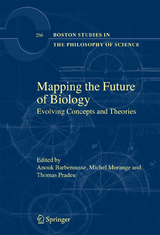Mapping the Future of Biology
Springer-Verlag New York Inc.
978-1-4020-9635-8 (ISBN)
Articulating Different Modes of Explanation: The Present Boundary in Biological Research.- Compromising Positions: The Minding/newline of Matter.- Abstractions, Idealizations, and Evolutionary Biology.- The Adequacy of Model Systems for Evo-Devo: Modeling the Formation of Organisms/ Modeling the Formation of Society.- Niche Construction in Evolution, Ecosystems and Developmental Biology.- Novelty, Plasticity and Niche Construction: The Influence of Phenotypic Variation on Evolution.- The Evolution of Complexity.- Self-Organization, Self-Assembly, and the Origin of Life.- Self-Organization and Complexity in Evolutionary Theory, or, in this Life the Bread Always Falls Jammy Side Down.
From the reviews:
“This book includes an interesting collection of papers written by a group of first-rate philosophers and biologists. … This book is a success as it contains worthy contributions. … very valuable for the serious student of biology.” (Davide Vecchi, Metapsychology Online Reviews, February, 2010)
“This book attempts a challenging integration of recent theoretical concepts in the fields of ecological-evolutionary-development. … the appeal of this book will be mostly to biological philosophers and … systems scientists.” (A. J. J. Lynch, Australasian Journal of Environmental Management, Vol. 17, June, 2010)
| Erscheint lt. Verlag | 12.3.2009 |
|---|---|
| Reihe/Serie | Boston Studies in the Philosophy of Science ; 266 |
| Zusatzinfo | XI, 173 p. |
| Verlagsort | New York, NY |
| Sprache | englisch |
| Maße | 155 x 235 mm |
| Themenwelt | Geisteswissenschaften ► Philosophie |
| Naturwissenschaften ► Biologie | |
| ISBN-10 | 1-4020-9635-6 / 1402096356 |
| ISBN-13 | 978-1-4020-9635-8 / 9781402096358 |
| Zustand | Neuware |
| Haben Sie eine Frage zum Produkt? |
aus dem Bereich




